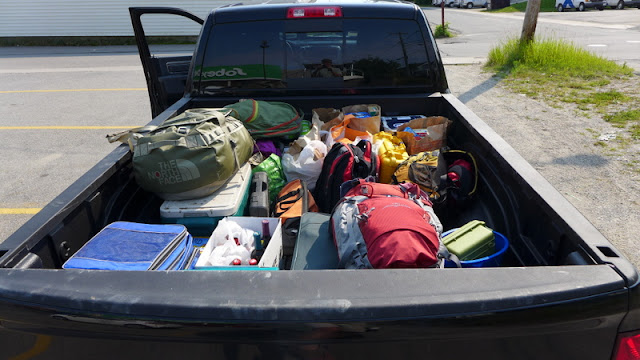 |
| Glacier's back scar is visible where the water starts to wash over his back. Photo: Samantha Emmert |
Glacier is a 31-year old male last sighted in 2013 off the Northern Florida coast. He is named for a large white scar on his back that looks like melting glacier. When we first found him, he was fluking in a unique way that resembled tail slashing, and he also lobtailed briefly. We followed Glacier and soon found a second right whale, Comet (#1514). The two surfaced near each other at one point, but did not seem to be associated.
 |
| Comet took a minute to rest at the surface. Photo: Johanna Anderson |
Comet is at least 30 years old and was last seen in 2014. He also has a distinctive scar on his back, from which he derives his name. By the end of the day these were the only right whales we found, but we did see a total of 202 harbor porpoise, as well as a few other humpback and minke whales.
The wind unexpectedly died down on the morning of September 25, so we decided to head out for our last afternoon on the Bay of Fundy. A team of six went out on the Nereid to survey North and East, and a team of two joined Chris on his boat, Jupiter, to survey South and West.
On the Nereid, we saw very few animals during our first few hours on the water. Then, Kelsey saw some whitewater in a seaweed patch, which typically indicates of the presence of an animal. We slowed down to identify the creature, and it turned out to be a right whale! It was behaving strangely, waving the tip of its fluke back and forth just above the water, then sinking for long periods of time without fluking.
 |
| We have a potential ID for this younger whale, but as of yet, the ID is not confirmed. Photo: Kelsey Howe |
We had a difficult time getting ID-able photographs during this encounter and ended up staying with the whale for about an hour, without much success. We also saw a second right whale fluke a bit further away and photographed it from a distance, but were unable to relocate it. Even though these two sightings were frustrating and hard to work, we were excited that there were whales in the Bay! After leaving the whales, we continued our survey but did not see much more than harbor porpoise, puffins, and a basking shark breaching in the distance.
The Jupiter surveyed some new areas for the season and made a pit stop to check out the historic lighthouse on Gannet Rock (built in 1831!). Though they didn't have any luck in finding right whales, they did get some close looks at a pair of humpbacks, one of which lobtailed several times!
 |
| This humpback picked the perfect setting to lobtail. Photo: Marianna Hagbloom |
While crossing the Grand Manan Channel, we all were treated to arguably the most spectacular sunset of the season.
 |
| And it only got better.... Photo: Brigid McKenna |
The wind looks like it will be blowing hard for the rest of the week, so sadly, the 25th really was our last day out on the water. The Nereid will be hauled out of the water and the field station will be packed up this week. The whales were few and far between this season, but we did our best to find the ones that did venture into the Bay of Fundy.
-Sam


















































